INFINITI is picking up speed on that never-ending road. Globally its sales are up 16% for the year to the end of September at more than 154,000 vehicles. It is chasing down Lexus and snapping at the heels of the German brands, but it still has a long way to go.
In SA, the brand is still in its infancy, selling 480 vehicles for the year to date compared to the 818 of Lexus and the thousands of the German trio.
Instead of trying to beat the Germans though, the company has adopted the adage of "if you can’t beat them, join them". Not that it has invited Mercedes into the Renault Nissan Alliance parent company as such, but instead the alliance has a technological partnership with Merc which Infiniti is capitalising on. It already uses some engines from its Stuttgart partner, but in July next year the new Q30 will arrive in SA and its character is very much Mercedes.
"The Q30 comes at a moment of increased opportunity for the brand," says its global communications boss, Matt Davis. "We need new product."
"Q30 is Infiniti’s commitment to offer a broader range of premium products in new segments, and is part of an intense product launch period that will see us further enhance our offer to an increasing number of customers," says Roland Krueger, president of Infiniti.
In the case of the Q30, a great deal of that new product is coming from Stuttgart, utilising the partnership which started back in 2010 and which Davis says has "no end in sight". He says that the collaboration ensures Infiniti is "able to leverage technical synergies", something which is becoming the norm in the global automotive industry.
The company is banking on those synergies to break into the competitive C-segment, where models like the Volkswagen Golf, Audi A3 and BMW 1 Series play. The segment has grown 9.4% worldwide and another of the players is the Mercedes-Benz A-Class. Its sibling, the GLA crossover, provides the platform for the new Q30. Actually, it provides a great deal more than just the platform.
On the outside, the Q30 has unique and stunning looks. It has its own identity which fits in with the company’s design philosophy and ensures it stands out in the C-segment crowd. That dominant grille, swooping lines and sporty demeanour all work really well to create a package that is visually very different indeed.
"Infiniti design is three dimensional on every panel. We want to give the sense and feeling that every Infiniti has been made by an artisan, by hand, not by computer," says Infiniti’s design boss, Simon Cox.
Climb inside and things are rather different. At the launch in Lisbon, Portugal, I immediately climbed into the driver’s seat and felt down the side for the adjustment controls. Nothing. Instead they were on the door trim and they were instantly recognisable. Standard Mercedes fare. Further investigation revealed Merc buttons everywhere, a Merc steering wheel and even the same instrumentation and trip computer graphics, except for the picture of the Q30 which appears briefly on start-up.
Quizzing chief vehicle engineer for the Q30, Grahame Cornforth, on why such seemingly simple things as the graphics were not changed, he said there were some time pressures for the project but they focused on making other areas of the car distinctly Infiniti.
That is true in some regards. The range of seats includes some rather luxurious armchairs with sumptuous leather and Bentley-style piping that give the Q30 an air of luxury. Changes to materials on the dashboard are apparent and the company avoided the tablet-style infotainment system in favour of a touchscreen in the dash. Despite all its Mercness, I was impressed with what the interior designers achieved in the cabin. It looks good, feels luxurious and, as is the norm for the brand, is well equipped.
On the subject of equipment, there will be a standard model as well as Premium and Sport derivatives, the latter having 15mm lower ride height, beefed up Brembo brakes and 7% stiffer springs. On the subject of ride height, the Q30 rides higher than rival hatchbacks giving it a crossover look, but the company is adamant it is not a crossover and in fact rides lower than the GLA. This week it unveiled the QX30, which is a crossover and which sits 30mm higher than the standard model. The QX30 also features black wheel arch cladding and pseudo off-road equipment.
Back to the Q30 though, and there will be four engine choices. The first is one of our favourites, the 1.5dCi turbodiesel from Nissan. Then there will be a 1.6 petrol turbo, also from Nissan. The top two motors are both from Merc, including the 2,143cc turbodiesel which is curiously badged as a 2.2 and a 2l turbo petrol which does duty in the Q30 S. There is also the option of either a six-speed manual box or Merc’s seven-speed dual clutch transmission.
Our first drive to take us out of Lisbon and onto the empty tolled highways was in the 1.5 dCi. First we had to deal with a rather poor satnav system which seemed to constantly suffer some form of time delay, forcing last-minute junction turns. That aside, the interior was comfortable and the engine responsive. Combined with a manual box, it seemed to lack some of the mid-range torque of a vehicle such as the Qashqai, perhaps because of weight, but it provided enough pull around town.
Then there was the matter of the suspension. Mercedes has been so heavily criticised for the suspension on the A-Class that it is working on revising the setup. South African Ross Garvie, the senior manager for launch at Infiniti Global, says that the company tested 50 different suspension calibration settings. It also added something called rebound springs, which are essentially additional springs fitted inside the shock absorbers to improve the ride.
Sadly, the engineers did not test a 51st calibration setting, because the Q30 turned little bumps in the Lisbon roads into big bumps. The rear suspension felt the undulations the most. Perhaps Mercedes said Infiniti could not make the A-Class look bad by putting more comfortable suspension in the Q30. Whatever the reason, it was a disappointment.
Disappointing because in general the package is good. The basic models drove well and are well equipped and the sports derivative with its 2l turbo provided excellent response and great handling. It was the star of the range by far and if you can stretch your budget it will be the one to have.
Infiniti SA says it cannot give any indicative pricing at this stage. Exchange rate issues make it too difficult for them to predict what the price will be come July next year when the Q30 arrives. Internationally the company is saying that it will come in 8%-10% cheaper than the A-Class but locally you can expect a higher specification which could well change this position.
The Q30 could well be a great alternative to the huge number of rivals we see on the roads. Yes, it has lots of Mercedes kit inside it, but is that really a bad thing? The suspension needs more work, it has terrible blind spots and that satnav needs to wake up, but overall the Q30 provides individuality and a great interior. By the end of 2016, you should be seeing that never ending road badge on our roads a lot more.
-
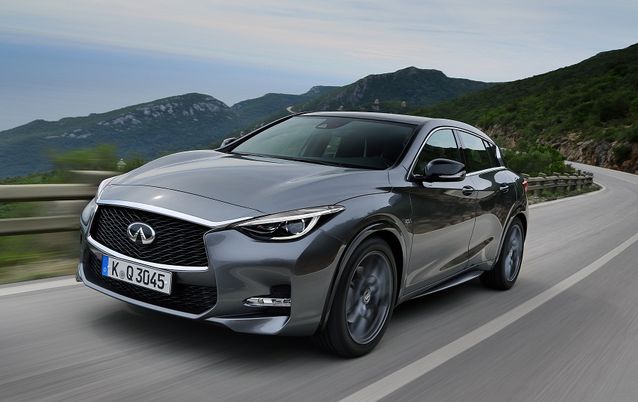
The Q30 has stunning and unique looks. Picture: INFINITI EUROPE
-
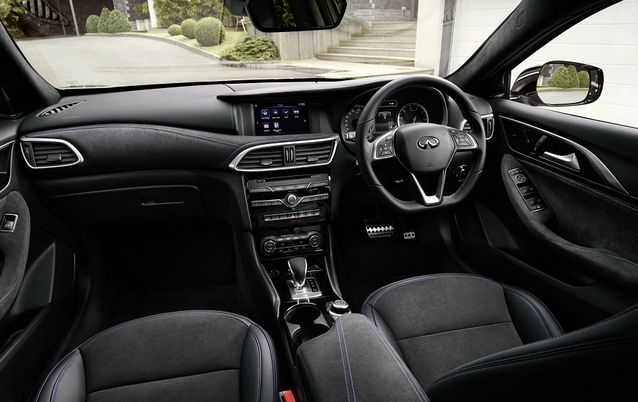
The interior has some Infiniti touches but it also has lots of Mercedes kit. Picture: INFINITI EUROPE
-
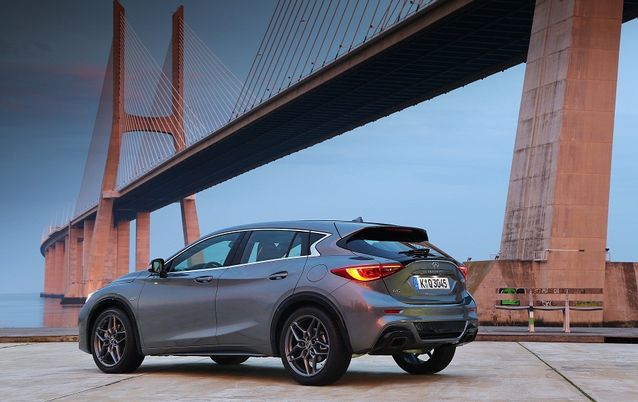
The ground clearance is higher than rival hatches. Picture: INFINITI EUROPE
-
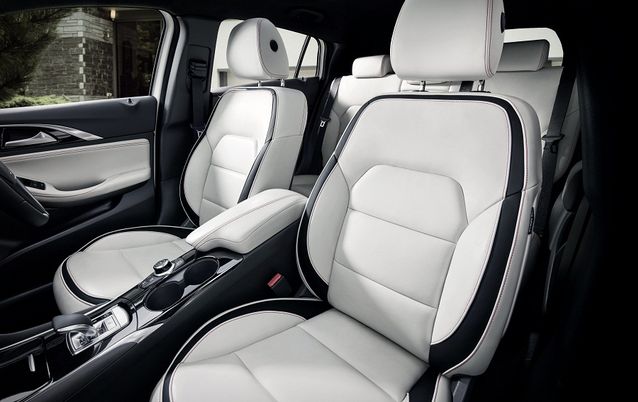
Those Infiniti designed seats are upmarket and luxurious. Picture: INFINITI EUROPE
-
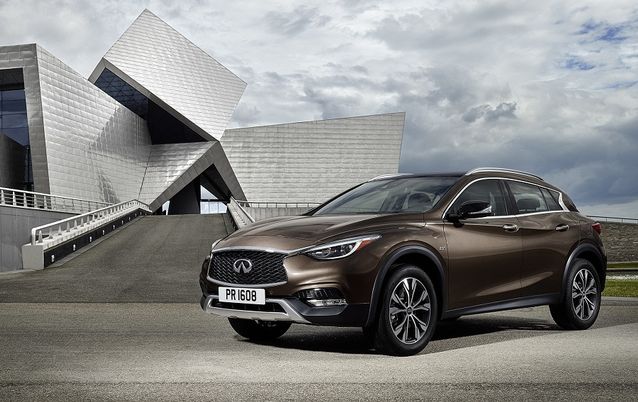
The QX30 crossover version was revealed at the LA Auto Show this week. Picture: INFINITI EUROPE
INFINITI is picking up speed on that never-ending road. Globally its sales are up 16% for the year to the end of September at more than 154,000 vehicles. It is chasing down Lexus and snapping at the heels of the German brands, but it still has a long way to go.
In SA, the brand is still in its infancy, selling 480 vehicles for the year to date compared to the 818 of Lexus and the thousands of the German trio.
Instead of trying to beat the Germans though, the company has adopted the adage of "if you can’t beat them, join them". Not that it has invited Mercedes into the Renault Nissan Alliance parent company as such, but instead the alliance has a technological partnership with Merc which Infiniti is capitalising on. It already uses some engines from its Stuttgart partner, but in July next year the new Q30 will arrive in SA and its character is very much Mercedes.
"The Q30 comes at a moment of increased opportunity for the brand," says its global communications boss, Matt Davis. "We need new product."
"Q30 is Infiniti’s commitment to offer a broader range of premium products in new segments, and is part of an intense product launch period that will see us further enhance our offer to an increasing number of customers," says Roland Krueger, president of Infiniti.
In the case of the Q30, a great deal of that new product is coming from Stuttgart, utilising the partnership which started back in 2010 and which Davis says has "no end in sight". He says that the collaboration ensures Infiniti is "able to leverage technical synergies", something which is becoming the norm in the global automotive industry.
The company is banking on those synergies to break into the competitive C-segment, where models like the Volkswagen Golf, Audi A3 and BMW 1 Series play. The segment has grown 9.4% worldwide and another of the players is the Mercedes-Benz A-Class. Its sibling, the GLA crossover, provides the platform for the new Q30. Actually, it provides a great deal more than just the platform.
On the outside, the Q30 has unique and stunning looks. It has its own identity which fits in with the company’s design philosophy and ensures it stands out in the C-segment crowd. That dominant grille, swooping lines and sporty demeanour all work really well to create a package that is visually very different indeed.
"Infiniti design is three dimensional on every panel. We want to give the sense and feeling that every Infiniti has been made by an artisan, by hand, not by computer," says Infiniti’s design boss, Simon Cox.
Climb inside and things are rather different. At the launch in Lisbon, Portugal, I immediately climbed into the driver’s seat and felt down the side for the adjustment controls. Nothing. Instead they were on the door trim and they were instantly recognisable. Standard Mercedes fare. Further investigation revealed Merc buttons everywhere, a Merc steering wheel and even the same instrumentation and trip computer graphics, except for the picture of the Q30 which appears briefly on start-up.
Quizzing chief vehicle engineer for the Q30, Grahame Cornforth, on why such seemingly simple things as the graphics were not changed, he said there were some time pressures for the project but they focused on making other areas of the car distinctly Infiniti.
That is true in some regards. The range of seats includes some rather luxurious armchairs with sumptuous leather and Bentley-style piping that give the Q30 an air of luxury. Changes to materials on the dashboard are apparent and the company avoided the tablet-style infotainment system in favour of a touchscreen in the dash. Despite all its Mercness, I was impressed with what the interior designers achieved in the cabin. It looks good, feels luxurious and, as is the norm for the brand, is well equipped.
On the subject of equipment, there will be a standard model as well as Premium and Sport derivatives, the latter having 15mm lower ride height, beefed up Brembo brakes and 7% stiffer springs. On the subject of ride height, the Q30 rides higher than rival hatchbacks giving it a crossover look, but the company is adamant it is not a crossover and in fact rides lower than the GLA. This week it unveiled the QX30, which is a crossover and which sits 30mm higher than the standard model. The QX30 also features black wheel arch cladding and pseudo off-road equipment.
Back to the Q30 though, and there will be four engine choices. The first is one of our favourites, the 1.5dCi turbodiesel from Nissan. Then there will be a 1.6 petrol turbo, also from Nissan. The top two motors are both from Merc, including the 2,143cc turbodiesel which is curiously badged as a 2.2 and a 2l turbo petrol which does duty in the Q30 S. There is also the option of either a six-speed manual box or Merc’s seven-speed dual clutch transmission.
Our first drive to take us out of Lisbon and onto the empty tolled highways was in the 1.5 dCi. First we had to deal with a rather poor satnav system which seemed to constantly suffer some form of time delay, forcing last-minute junction turns. That aside, the interior was comfortable and the engine responsive. Combined with a manual box, it seemed to lack some of the mid-range torque of a vehicle such as the Qashqai, perhaps because of weight, but it provided enough pull around town.
Then there was the matter of the suspension. Mercedes has been so heavily criticised for the suspension on the A-Class that it is working on revising the setup. South African Ross Garvie, the senior manager for launch at Infiniti Global, says that the company tested 50 different suspension calibration settings. It also added something called rebound springs, which are essentially additional springs fitted inside the shock absorbers to improve the ride.
Sadly, the engineers did not test a 51st calibration setting, because the Q30 turned little bumps in the Lisbon roads into big bumps. The rear suspension felt the undulations the most. Perhaps Mercedes said Infiniti could not make the A-Class look bad by putting more comfortable suspension in the Q30. Whatever the reason, it was a disappointment.
Disappointing because in general the package is good. The basic models drove well and are well equipped and the sports derivative with its 2l turbo provided excellent response and great handling. It was the star of the range by far and if you can stretch your budget it will be the one to have.
Infiniti SA says it cannot give any indicative pricing at this stage. Exchange rate issues make it too difficult for them to predict what the price will be come July next year when the Q30 arrives. Internationally the company is saying that it will come in 8%-10% cheaper than the A-Class but locally you can expect a higher specification which could well change this position.
The Q30 could well be a great alternative to the huge number of rivals we see on the roads. Yes, it has lots of Mercedes kit inside it, but is that really a bad thing? The suspension needs more work, it has terrible blind spots and that satnav needs to wake up, but overall the Q30 provides individuality and a great interior. By the end of 2016, you should be seeing that never ending road badge on our roads a lot more.

























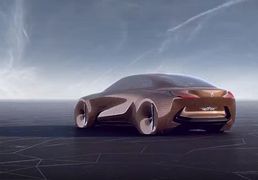

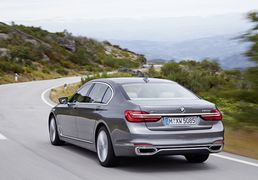





Change: 1.37%
Change: 1.32%
Change: 2.91%
Change: 0.45%
Change: 3.09%
Data supplied by Profile Data
Change: 1.63%
Change: 0.83%
Change: 1.37%
Change: 0.00%
Change: 0.69%
Data supplied by Profile Data
Change: -2.04%
Change: -1.78%
Change: -1.55%
Change: -1.86%
Change: -1.48%
Data supplied by Profile Data
Change: -1.19%
Change: 0.31%
Change: -0.65%
Change: -1.39%
Change: 2.92%
Data supplied by Profile Data